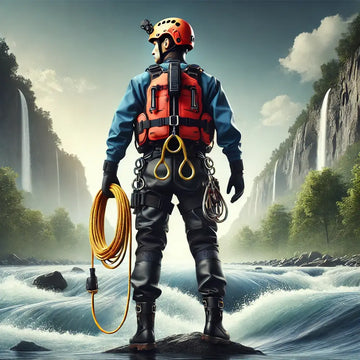Swiftwater rescue is one of the most challenging and dangerous types of emergency response. Rapid currents, unpredictable conditions, and limited visibility make swiftwater environments especially hazardous. Proper gear is not just a necessity—it’s a lifesaver. In this blog, we’ll explore the must-have swiftwater rescue gear, its features, and why investing in high-quality equipment is critical for safety and efficiency.
Why Specialized Gear Matters in Swiftwater Rescue
Swiftwater rescue scenarios often involve:
-
Strong currents
-
Debris-laden waters
-
Limited access to victims
-
Harsh environmental conditions
Standard rescue equipment cannot withstand these challenges. Specialized swiftwater gear is designed for durability, buoyancy, and adaptability, ensuring rescuers can perform their tasks effectively while minimizing risks.
Essential Swiftwater Rescue Gear
1. Personal Flotation Devices (PFDs)
-
Features: Rescue-grade PFDs come with high buoyancy ratings, multiple attachment points, and quick-release harnesses.
-
Importance: These PFDs keep rescuers afloat and provide essential safety during rapid water operations.
2. Helmets
-
Features: Helmets designed for swiftwater rescue are lightweight, impact-resistant, and drain water efficiently.
-
Importance: Protecting the head from debris and strong water impacts is crucial in fast-moving water.
3. Rescue Ropes and Throw Bags
-
Features: Floating ropes made from durable materials like polypropylene are stored in compact throw bags for quick deployment.
-
Importance: Ropes are essential for pulling victims to safety or securing rescuers during challenging operations.
4. Dry Suits and Wetsuits
-
Features: These suits are made from waterproof and insulating materials to protect against hypothermia and abrasions.
-
Importance: Prolonged exposure to cold water can lead to life-threatening conditions without proper thermal protection.
5. Waterproof Communication Devices
-
Features: Radios with waterproof casings and headsets ensure clear communication even in wet conditions.
-
Importance: Effective coordination among team members is vital in dynamic rescue scenarios.
6. Rescue Boards and Inflatable Rafts
-
Features: Lightweight, durable, and highly maneuverable, these tools aid in victim retrieval and team transportation.
-
Importance: They provide stability and speed, essential for reaching victims quickly.
7. Knife and Multi-Tool
-
Features: Rust-resistant blades with easy-access sheaths are standard.
-
Importance: These tools can cut ropes, remove debris, or perform emergency repairs.
8. Carabiners and Pulleys
-
Features: Made of lightweight, high-strength materials, they are crucial for rigging systems and securing ropes.
-
Importance: They enable efficient setup of anchor systems for both rescues and self-recovery.
9. First Aid Kit
-
Features: Waterproof and compact kits containing supplies for hypothermia, cuts, and fractures.
-
Importance: Immediate medical attention can make a significant difference in survival rates.
Advanced Equipment for Professional Rescuers
For teams handling complex swiftwater rescues, advanced gear can further enhance capabilities:
-
Sonar Devices: For locating submerged objects or victims.
-
Thermal Imaging Cameras: Useful in low-visibility conditions.
-
Drones: Equipped with cameras to scout hazardous areas without putting rescuers at risk.
Maintaining and Inspecting Rescue Gear
Rescue gear’s effectiveness depends on its condition. Regular maintenance and inspection are non-negotiable:
-
Check for Wear and Tear: Inspect ropes, PFDs, and suits for signs of damage.
-
Clean Thoroughly: Remove dirt, debris, and contaminants after each use.
-
Store Properly: Keep gear in dry, cool places to prevent degradation.
-
Replace as Needed: Retire equipment that no longer meets safety standards.
Training: The Key to Effective Gear Use
Owning high-quality gear is only part of the equation. Rescue teams must undergo rigorous training to:
-
Master the use of each piece of equipment.
-
Build confidence in high-stress scenarios.
-
Improve team coordination and efficiency.
Conclusion
Swiftwater rescue gear is a lifeline for both rescuers and victims. From basic tools like PFDs and helmets to advanced equipment like drones and sonar devices, each piece plays a critical role in ensuring safety and success. Investing in top-tier gear and proper training is essential for anyone involved in swiftwater rescue operations.
As technology continues to evolve, we can expect even more innovative tools to enhance the safety and efficiency of these life-saving missions.
Stay tuned for more insights into rescue equipment and best practices in emergency response. Let us know if you have questions or need recommendations for swiftwater rescue gear!





